Curtiss P-36
The Curtiss Model 75... prototype for the P-36 and often referred to as the 'XP-36',
even though that designation was never officially issued and the airframe did not
become U.S. Army property until it was later rebuilt into the XP-37.
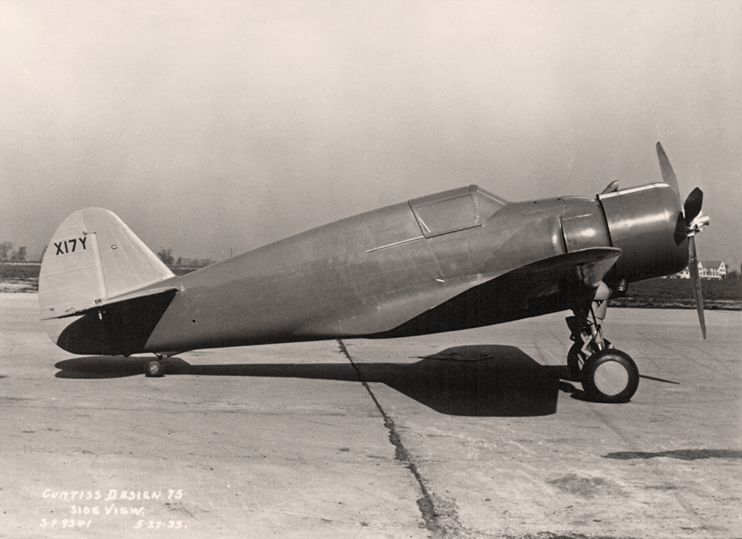
Project 914 Archives (S.Donacik collection) -
Larger Image
The Model 75, possibly during its first flight in May of 1935.
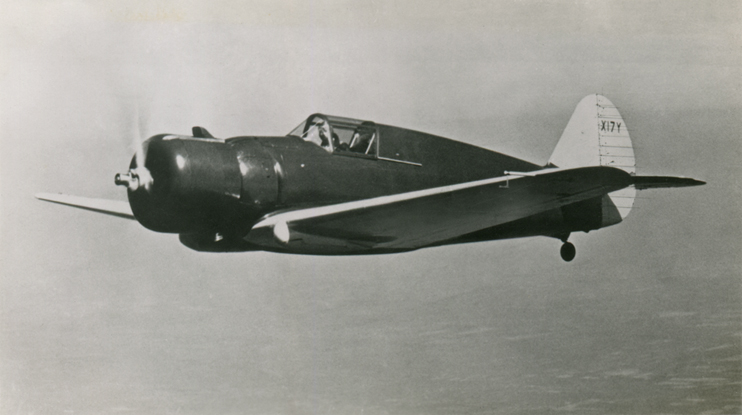
Project 914 Archives (S.Donacik collection) -
Larger Image
As an aside, for the photo collectors and wannabe historians out there: in the days
long before Photoshop, etc., many photos were retouched by hand for publication. This
was done in order to redefine details that had been lost or obscured, usually in areas
of low contrast. Here, someone has made a rather poor but likely sufficient job of
trying to redefine some of the structural detail on the rudder.
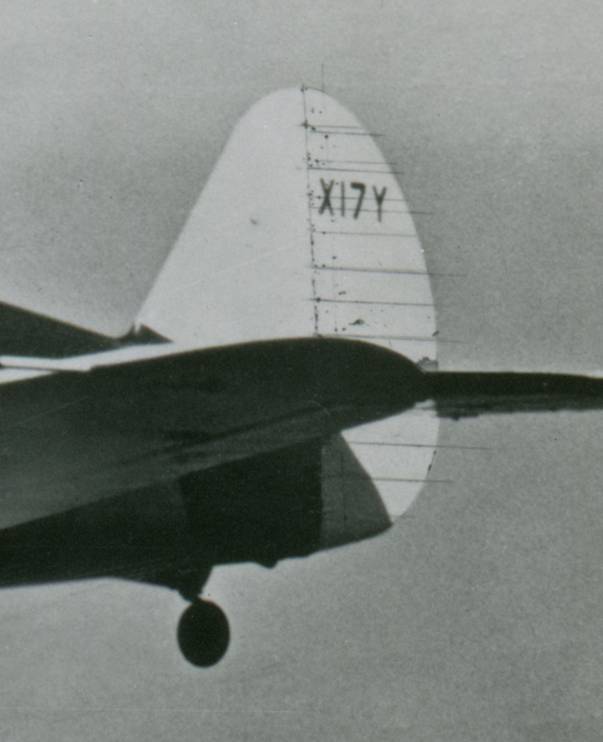
Project 914 Archives (S.Donacik collection) -
Larger Image
The second Y1P-36, serial number 37-69, during service testing at Wright Field.
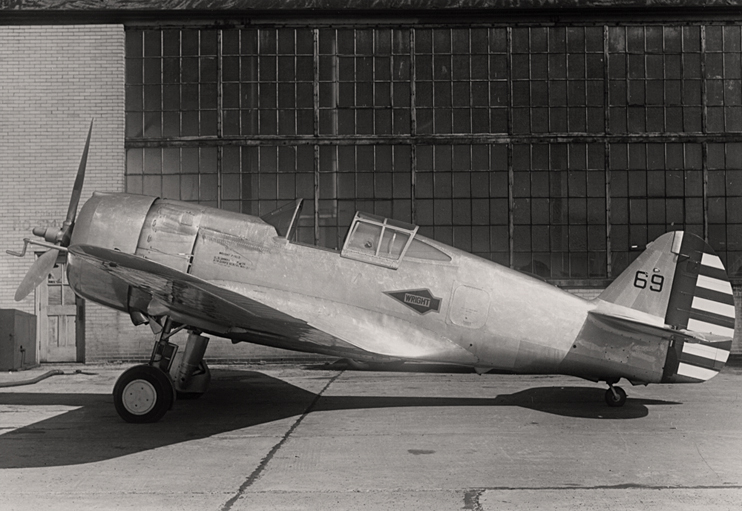
Project 914 Archives (S.Donacik collection) -
Larger Image
Curtiss company photo showing an early production P-36A in flight over Buffalo, NY.
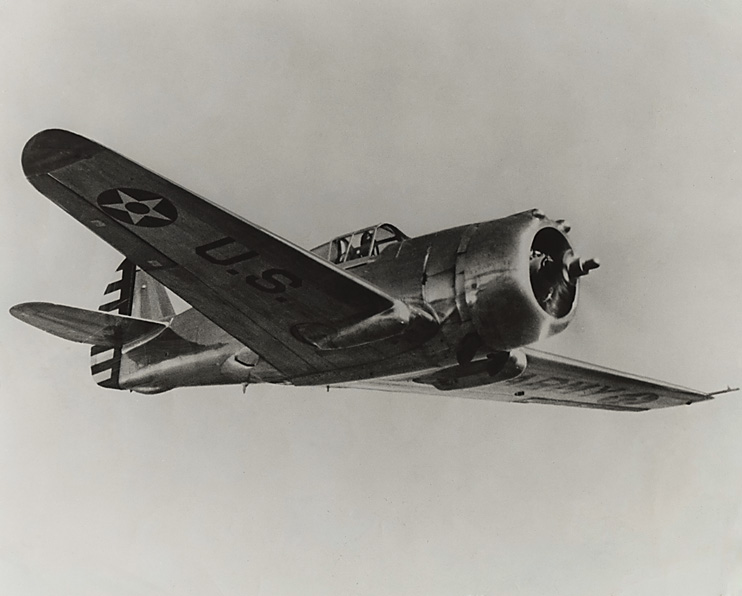
Project 914 Archives (S.Donacik collection) -
Larger Image
I have not yet figured out the who/what/where/why/when or how of this P-36A.
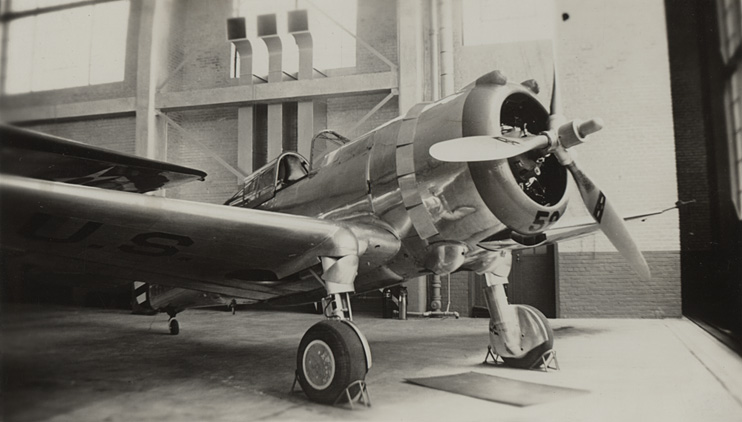
Project 914 Archives (S.Donacik collection) -
Larger Image
A P-36A of the 94th Pursuit Squadron, 1st Pursuit Group.
See more photos of 1st Pursuit Group P-36s HERE.
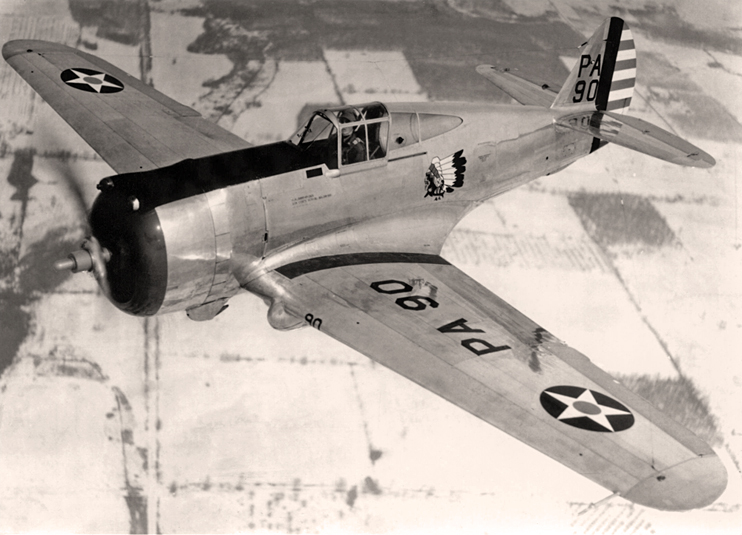
San Diego Air & Space Museum -
Larger Image
This postcard image shows P-36As of the 33rd Pursuit Squadron, 8th Pursuit Group
at Langley Field in 1939. The squadron CO's ship is in the center of the shot.
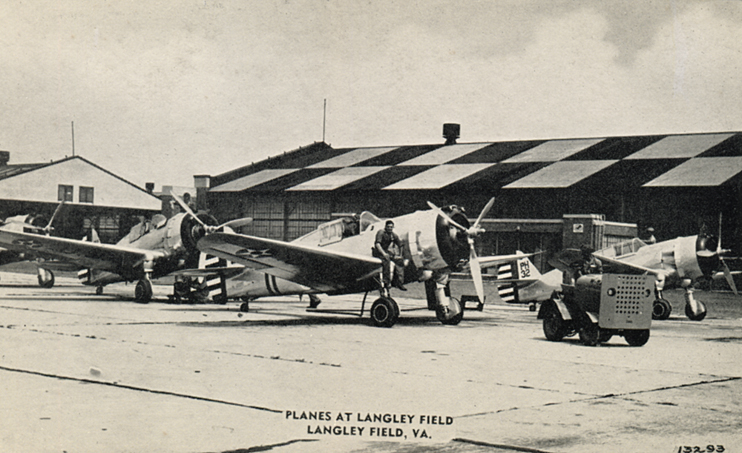
Project 914 Archives (S.Donacik collection) -
Larger Image
A closer look at the boss bird, which may be ship #20.
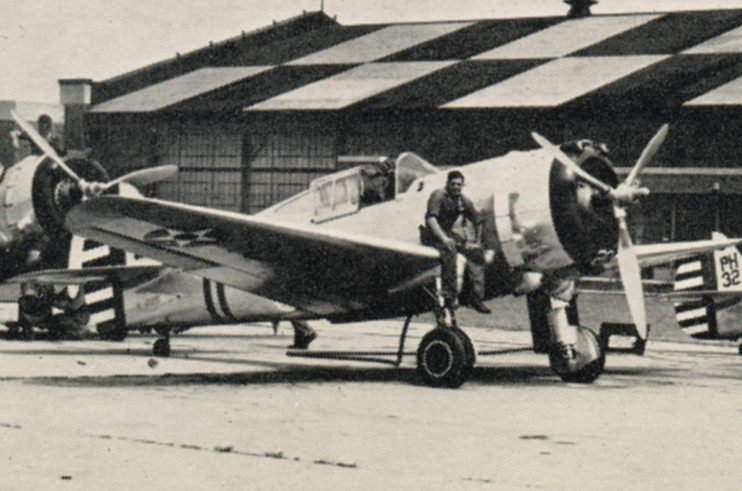
Project 914 Archives (S.Donacik collection) -
Larger Image
Colonel Charles Lindbergh with a P-36A of the 33rd Pursuit Squadron
during an inspection tour of US aviation facilities in early 1939.
More photos of Lindy with this P-36 will be added in the future.
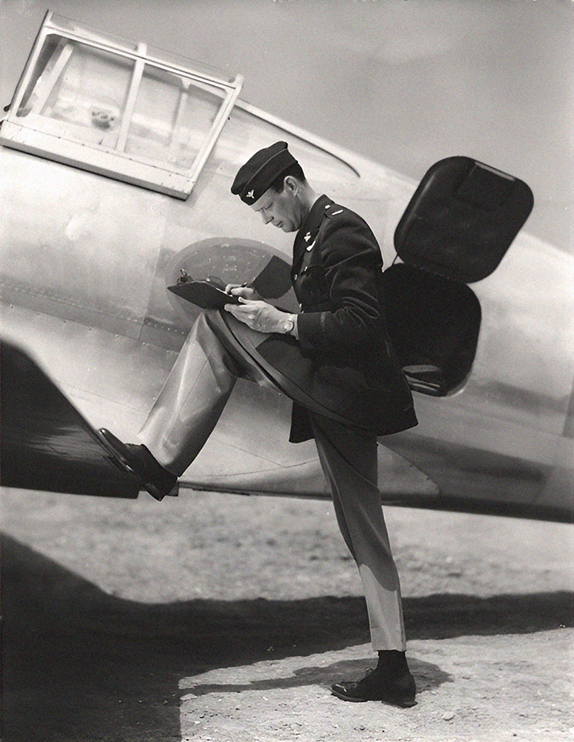
San Diego Air and Space Museum -
Larger Image
This P-36A was assigned to the 'A Flight' leader of the 36th PS, 8th PG at Langley Field in 1940.
The USAAC designator system changed in May of 1940, from double letter codes to number/letter
codes that identified the group to which an aircraft was assigned. When this photo was taken, the codes
on this P-36 were in transition; she wears both the 8th Pursuit Group's new '8P' code on the tail and
the old 'PH' code on the wing, meaning that this photo was taken no earlier than May of 1940.
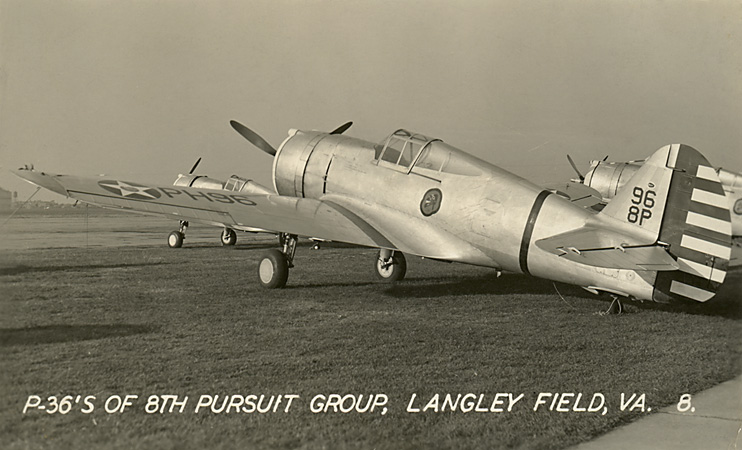
Project 914 Archives (S.Donacik collection) -
Larger Image
A P-36C in temporary camouflage paint at Bolling Field, January 1940.
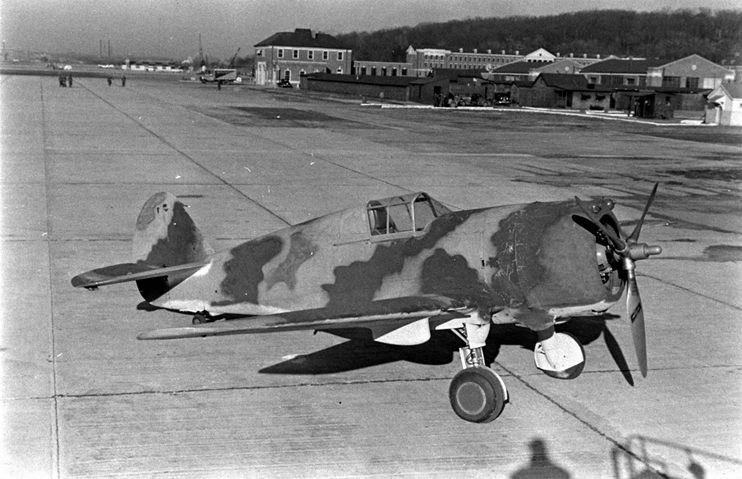
LIFE Photo Archives via Google Arts & Culture (Thomas McAvoy photo) -
Larger Image
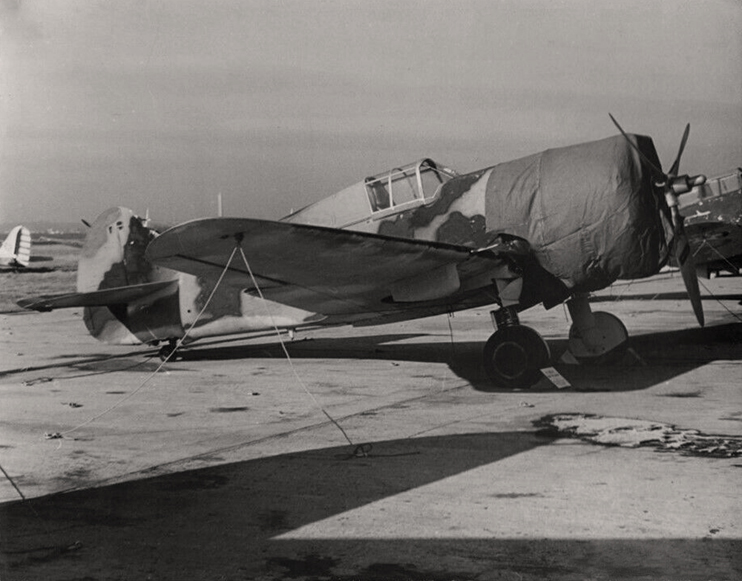
Project 914 Archives -
Larger Image
P-36A #33 (said to be serial 38-33) flown by the 24th Pursuit Squadron's CO, 1940.
The 24th was part of the 16th Pursuit Group... you can see some P-40s of the 16th
HERE...
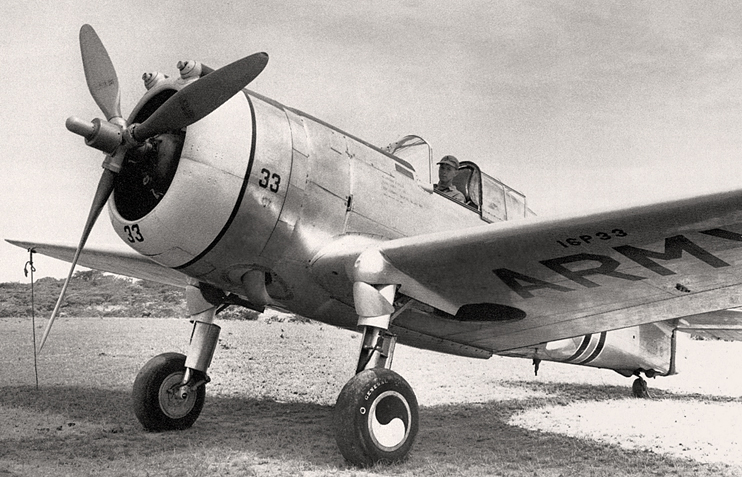
From: Alae Supra Canalem: Wings Over the Canal by Dan Hagdedorn via Wikimedia Commons -
Larger Image
A P-36A of the 24th Pursuit Squadron, 16th Pursuit Group at San Jose, Costa Rica with a
B-18 of the 74th BS, 6th BG and an unidentified P-26. Note that the B-18 carries on her
tail the two-star insignia of a Major General, whom I have yet to identify.
The news tag attached to the reverse of the print reads as follows:
U.S. Army Planes Visit Costa Rica
A group of U.S. Army planes from the Panama Canal Zone visit the airport of San Jose,
Costa Rica. The airport building is in the rear. An Army mission from the U.S. is
helping to train the small army of this Central American republic.
Associated Press Photo 12/24/41
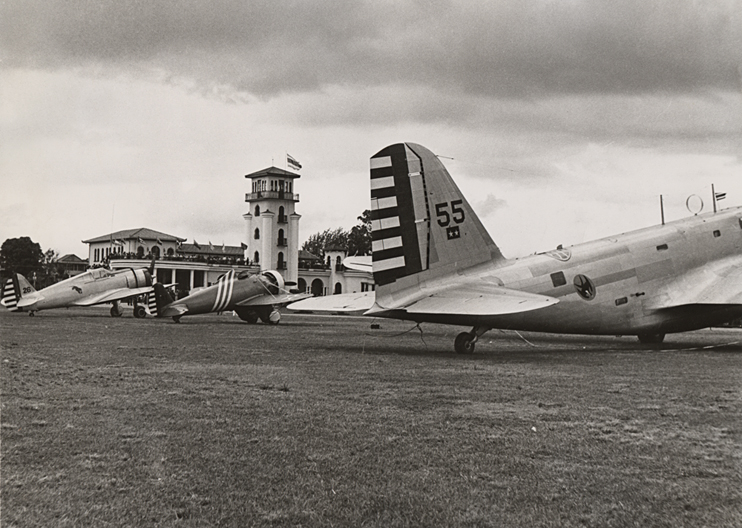
Project 914 Archives (S.Donacik collection) -
Larger Image
A closer look at the P-36 and P-26...
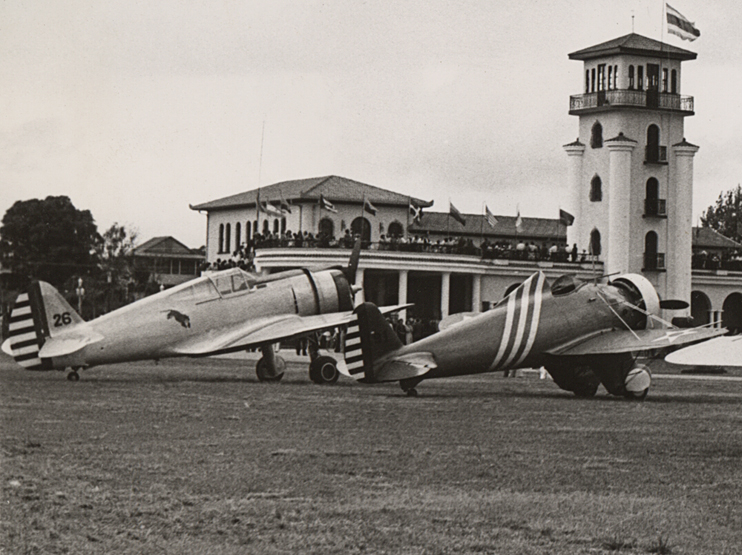
Project 914 Archives (S.Donacik collection) -
Larger Image
...and the P-36.
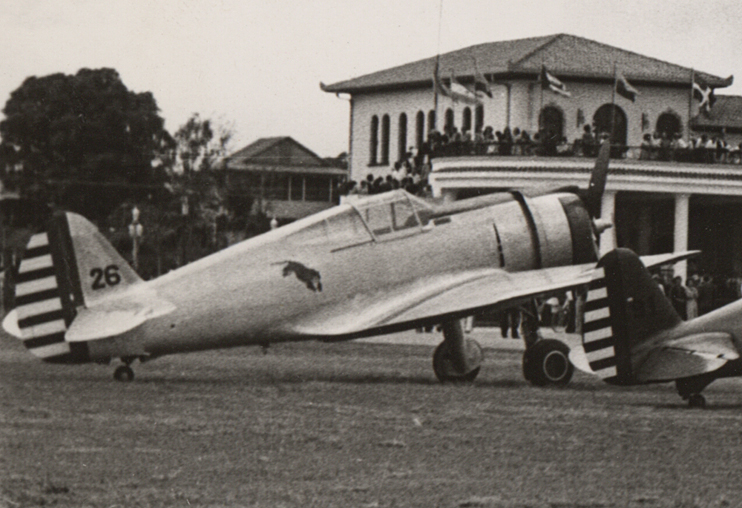
Project 914 Archives (S.Donacik collection) -
Larger Image
A P-36C of the 23rd Composite Group, which was operating as part of the Air Corps Tactical
School at Maxwell Field, Alabama in 1940. The ACTS was the immediate forerunner of the Army
Air Forces School of Applied Tactics, headquartered at Orlando Army Air Base, Florida.
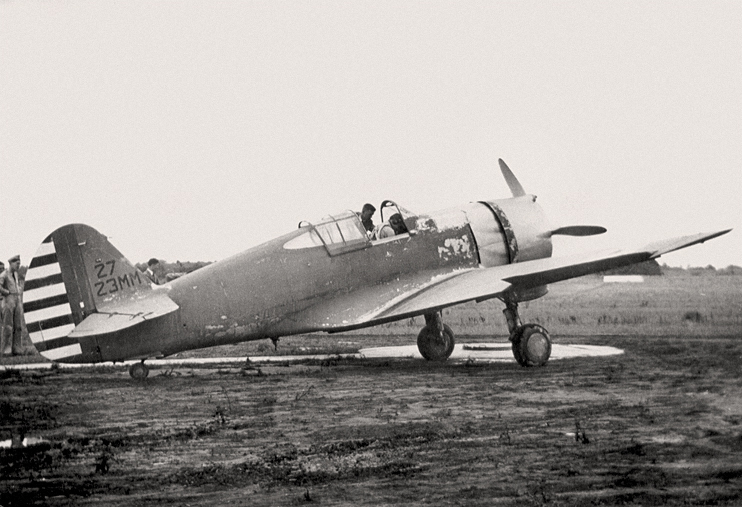
Project 914 Archives -
Larger Image
P-36As of the 35th Pursuit Group at Albuquerque Airport in early 1940.
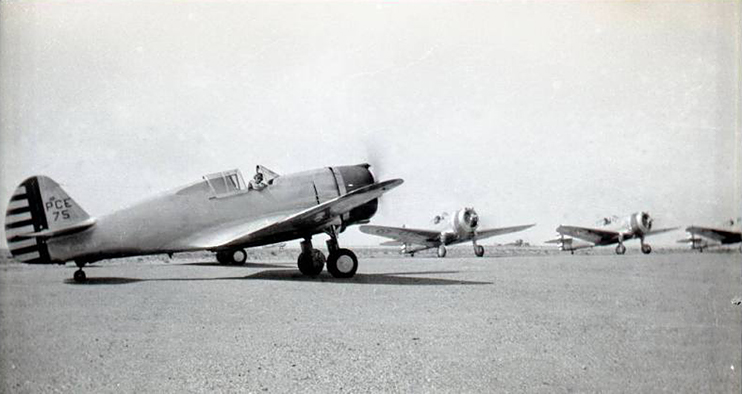
Albuquerque Museum (John L. Fertig, Jr. photo) -
Larger Image
The entire 36th Pursuit Group at Langley Field in the Summer of 1940.
See more Hawks of the 36th Pursuit Group HERE.
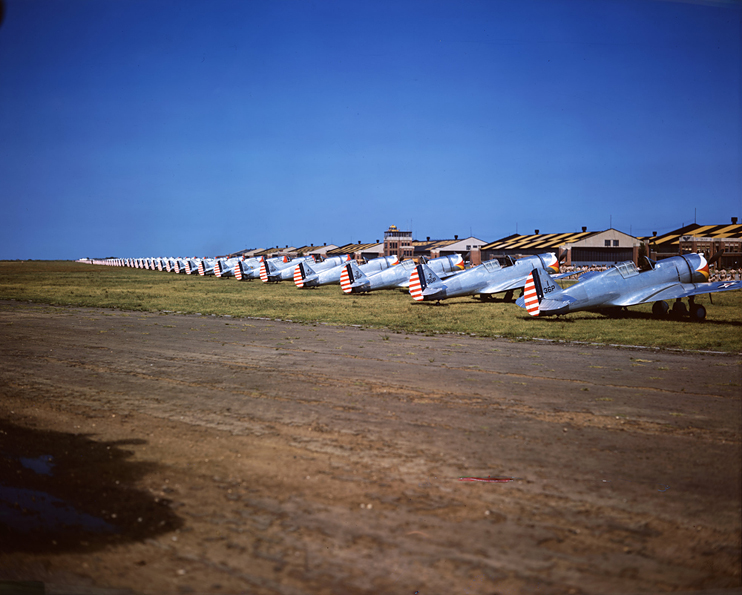
Ethell Collection via Project 914 Archives -
Larger Image
This P-36A of the 51st Pursuit Group was photographed at Oakland Airport, California in 1941.
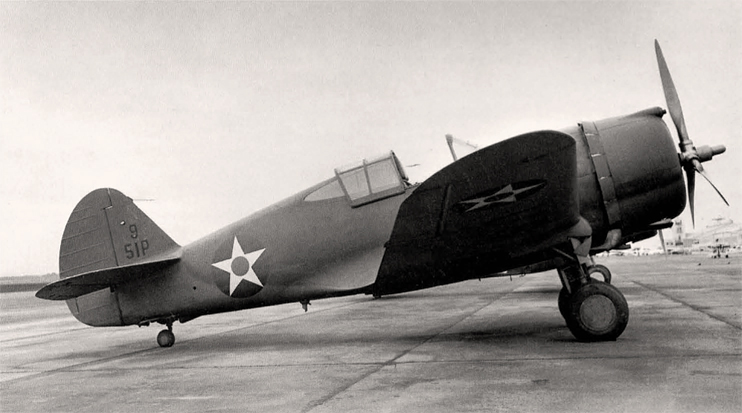
From: USAAF Aircraft Markings and Camouflage 1941-1947 by Robert D. Archer -
Larger Image
(Gordon S. Williams via William L. Swisher)
Another view of the same ship, though I don't when or where the photo was taken.
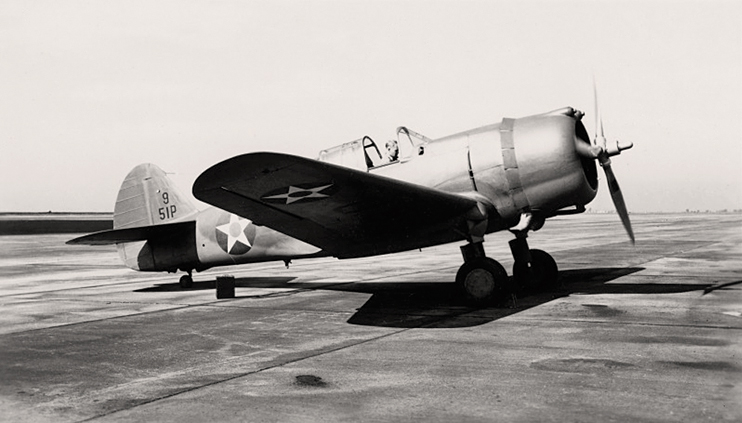
San Diego Air and Space Museum Archives (Ray Wagner Collection) -
Larger Image
These next three photos show a P-36A of the 92nd School Squadron
receiving a bit of TLC at Barksdale Field, Louisiana during the Summer of 1941.
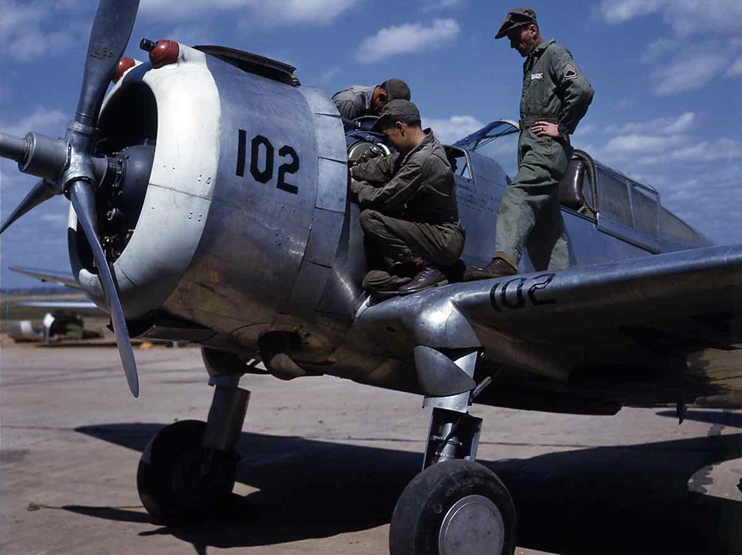
LIFE Photo Archives (Dmitri Kessel photo) -
Larger Image
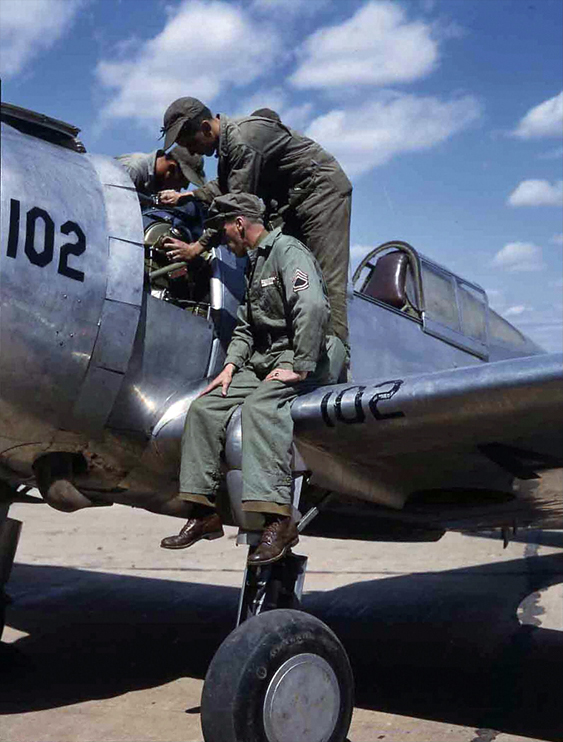
LIFE Photo Archives (Dmitri Kessel photo) -
Larger Image
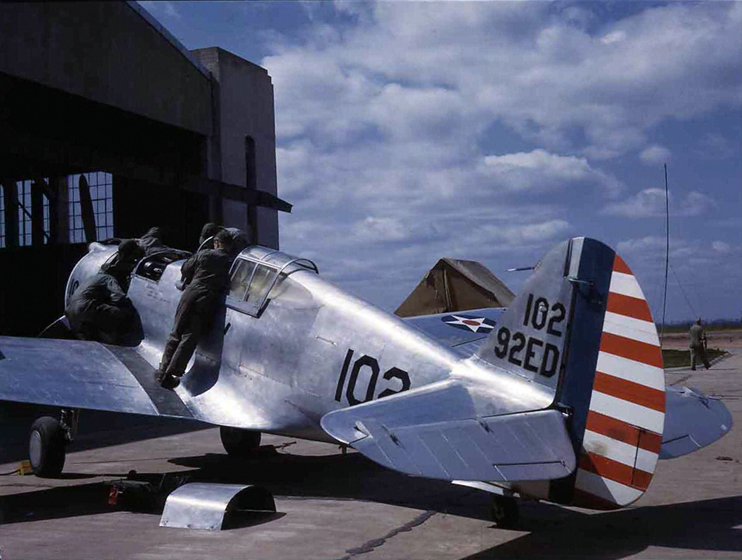
LIFE Photo Archives (Dmitri Kessel photo) -
Larger Image
A Hawk 75A-2 built for France at the Buffalo Airport, 1939.
See more French Hawks
HERE...
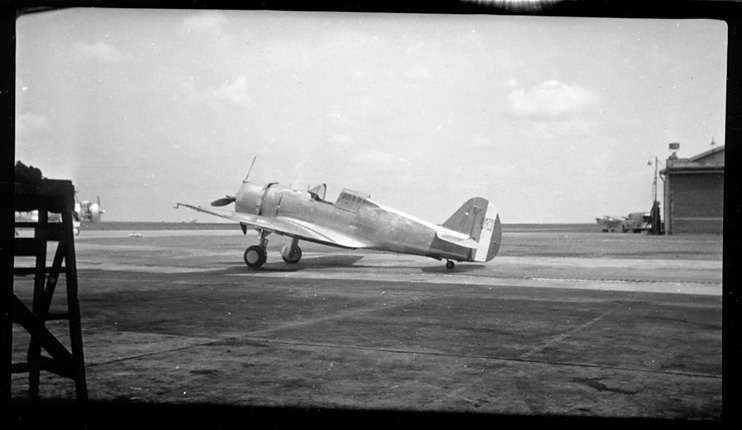
Project 914 Archives (S.Donacik collection) -
Larger Image
Mohawk III AR633, operated by 510 Squadron, RAF, a communications outfit. This ship was destroyed
on March 9th, 1944 when it was struck by a Hawker Typhoon while waiting to depart RAF Milfield.
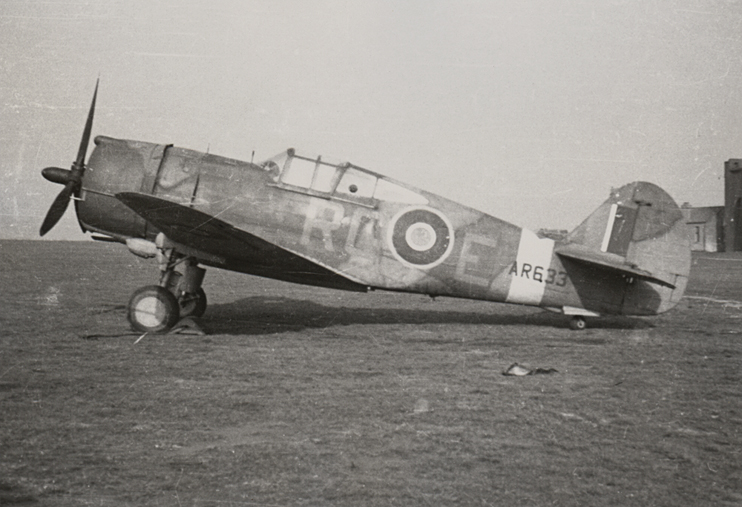
Project 914 Archives (S.Donacik collection) -
Larger Image
A large number of French Hawk 75s fell into German hands after France's surrender in 1940,
including this ship... H75A-4 No.50, one of just six A-4s to be delivered to the French. She
is said to have been assigned to III/JG77 for a brief time and then went on to serve alongside
many of her sister ships as a trainer with Fliegerschule 4, based at Furth near Nuremberg.
During her time with III/JG77 she apparently played the part of a British fighter
in a German film from 1941 titled 'Kampfgeschwader Lutzow'.
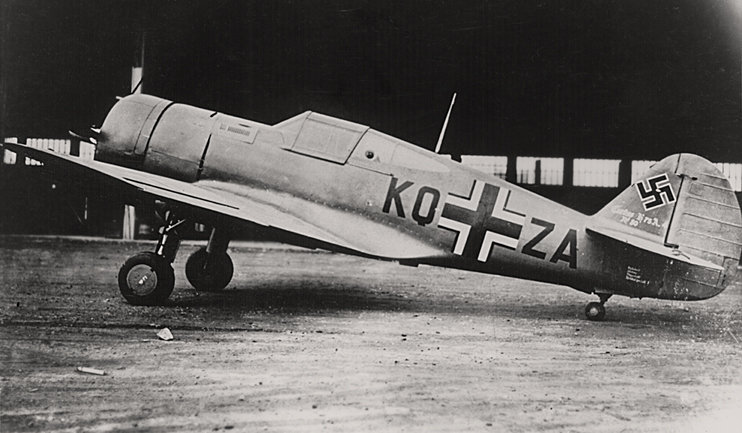
Project 914 Archives (S.Donacik collection) -
Larger Image
Peru received a total of 28 Hawk 75s in 1942 and 43. See more
HERE...
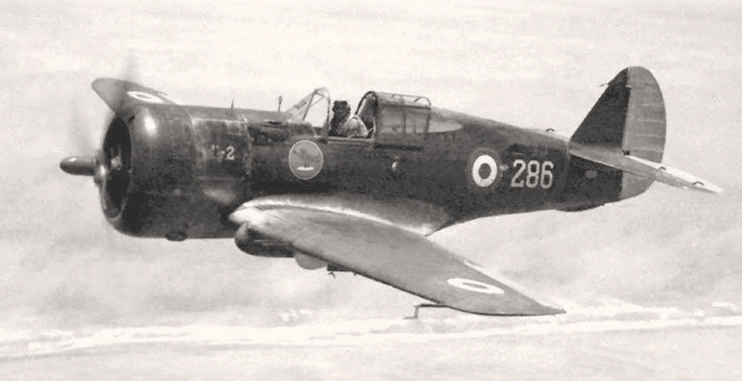
Original image found in multiple postings on Facebook -
Larger Image
P-36C 38-210 is one of just two flying Curtiss Model 75s as of this writing in 2024.
Currently based at Duxford in the UK with The Fighter Collection, she was the last
P-36C built and wears the livery of the 27th Pursuit Squadron, 1st Pursuit Group.
A feature page for this ship will be added in the future.
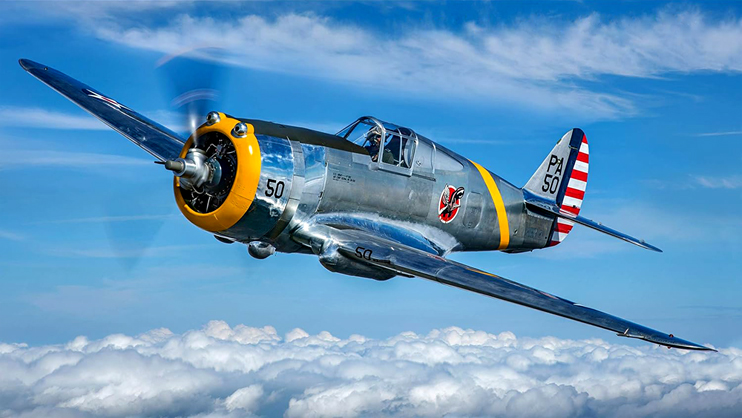
John M. Dibbs photo -
Larger Image
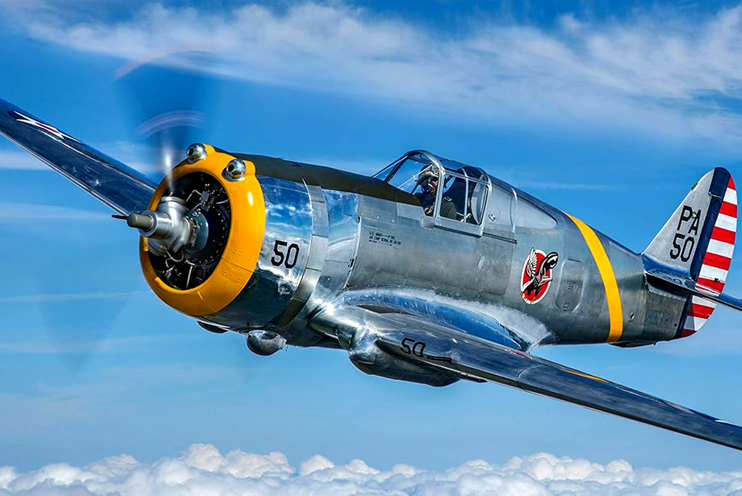
John M. Dibbs photo -
Larger Image
A beautiful piece of artwork by Carlos Alonso.
Here's the caption for this acrylic painting:
A pre-war Curtiss P-36A from 35th Pursuit Squadron, 8th Pursuit Group, flies over
the tree tops during a training exercise at Langley Field, Virginia, circa 1939.
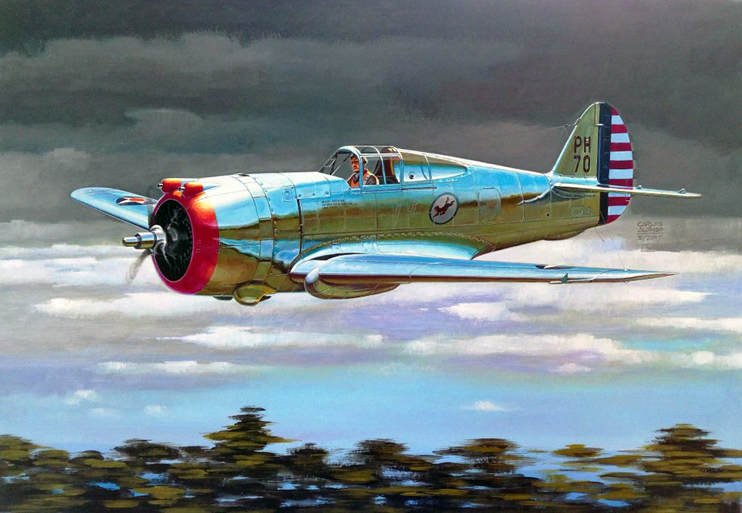
Artist's Website -
Larger Image
Back to 'Other Curtiss Aircraft'









